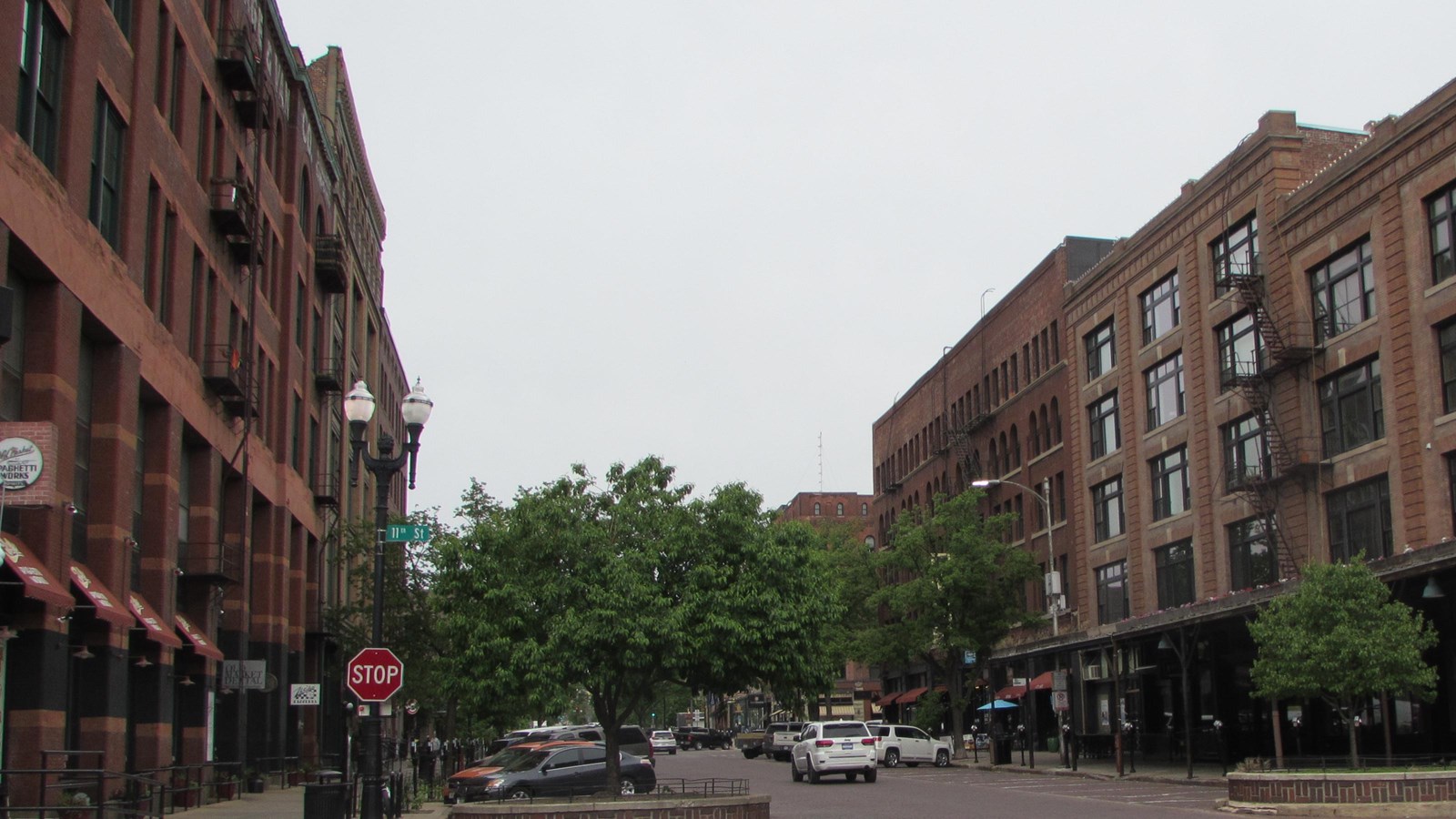Last updated: September 2, 2022
Place
Old Market Historic District

David Calease, NPS
Quick Facts
Location:
Five and half blocks in downtown Omaha bound by 10th and 13th Streets and Farnam and Jackson Streets
Significance:
Commerce; Architecture
Designation:
National Register of Historic Places; Omaha Local Landmark
MANAGED BY:
Private Property Owners
The Old Market Historic District is situated five blocks west of the Missouri River in downtown Omaha. Listed in the National Register of Historic Places and designated as an Omaha Local Landmark, the district is significant in the economic history of Omaha and is characterized by wholesale jobbing houses from the 1880s to the early twentieth century. A forward-thinking, preservation mindset sought new uses for the district’s buildings in the 1960s, and thanks to infusion of retail shops, art galleries, restaurants, and loft apartments, it is now one of Omaha’s most popular destinations for tourists and locals alike.
The district became the hub of the wholesale jobbing industry during an economic and population boom in the 1880s and 1890s. Advances in railroad and telegraph communication meant jobbers no longer needed to be near east coast manufacturers causing many to move west and create networks of buying and selling. As the eastern terminus of the Union Pacific railroad, Omaha was the logical place for many jobbers to relocate to in the 1880s. A few manufacturers took residence within the district, including boot, shoe, and dry goods manufacturers and several printing companies. Retail and service industries also located in the Old Market during the late nineteenth century including hotels, the fire house, and various small saloons. Omaha’s post-World War II economy experienced change as wholesaling declined and retail, finance, government, and services increased. Suburban shopping centers, like the now-demolished Crossroads Mall, pulled customers away from downtown to the outskirts of the growing city.
By the mid-1960s, nearly twenty years of decline had taken its toll on the once flourishing Old Market as many warehouses and commercial buildings laying vacant. Citizens and civic leaders targeted downtown in a drive to beautify the city. To entice new employees to Omaha’s firms and to improve the quality of life, citizens engaged in tree planting and litter clean up campaigns. Historic preservation played an important role in beautification efforts by emphasizing the beauty of Omaha’s built environment, preserving many buildings within the Old Market. Vacant buildings were converted into functional properties while maintaining a sense of the city’s past.
Today, the Old Market Historic District is one of Omaha’s most visited areas. Visitors can enjoy the preserved brick streets, covered sidewalks, and outdoor cafes. Many of Omaha’s historic and architecturally significant buildings in the district have undergone adaptive reuse and now offer an array of shopping and dining options.
The district became the hub of the wholesale jobbing industry during an economic and population boom in the 1880s and 1890s. Advances in railroad and telegraph communication meant jobbers no longer needed to be near east coast manufacturers causing many to move west and create networks of buying and selling. As the eastern terminus of the Union Pacific railroad, Omaha was the logical place for many jobbers to relocate to in the 1880s. A few manufacturers took residence within the district, including boot, shoe, and dry goods manufacturers and several printing companies. Retail and service industries also located in the Old Market during the late nineteenth century including hotels, the fire house, and various small saloons. Omaha’s post-World War II economy experienced change as wholesaling declined and retail, finance, government, and services increased. Suburban shopping centers, like the now-demolished Crossroads Mall, pulled customers away from downtown to the outskirts of the growing city.
By the mid-1960s, nearly twenty years of decline had taken its toll on the once flourishing Old Market as many warehouses and commercial buildings laying vacant. Citizens and civic leaders targeted downtown in a drive to beautify the city. To entice new employees to Omaha’s firms and to improve the quality of life, citizens engaged in tree planting and litter clean up campaigns. Historic preservation played an important role in beautification efforts by emphasizing the beauty of Omaha’s built environment, preserving many buildings within the Old Market. Vacant buildings were converted into functional properties while maintaining a sense of the city’s past.
Today, the Old Market Historic District is one of Omaha’s most visited areas. Visitors can enjoy the preserved brick streets, covered sidewalks, and outdoor cafes. Many of Omaha’s historic and architecturally significant buildings in the district have undergone adaptive reuse and now offer an array of shopping and dining options.
